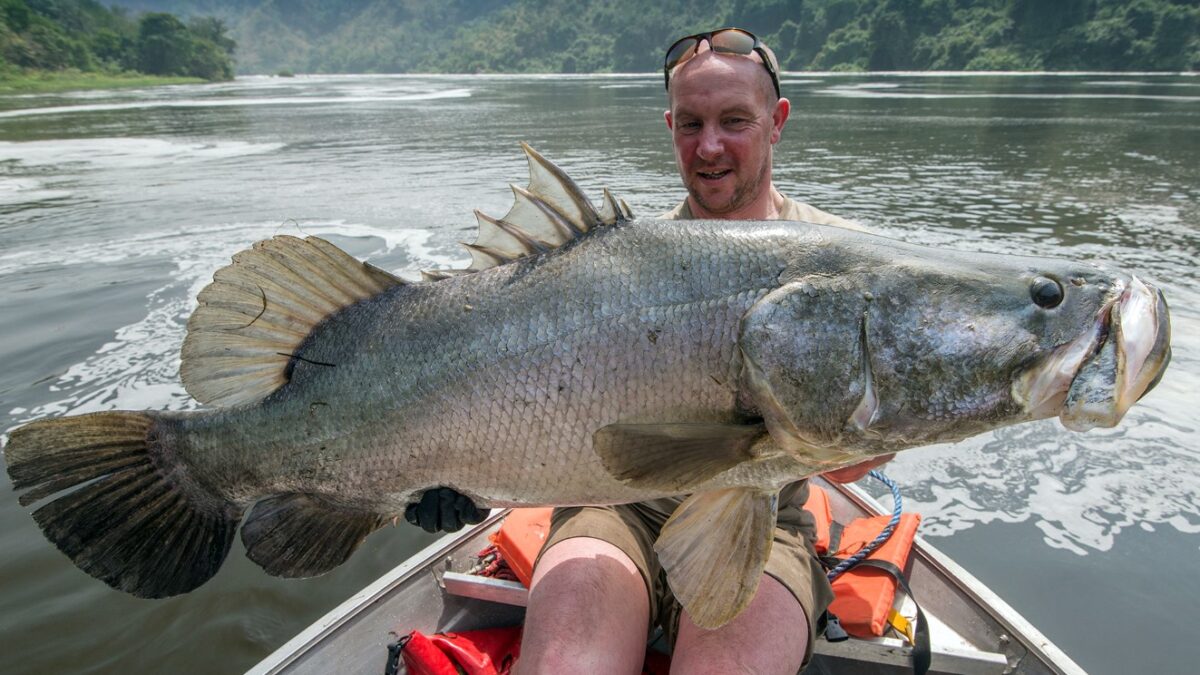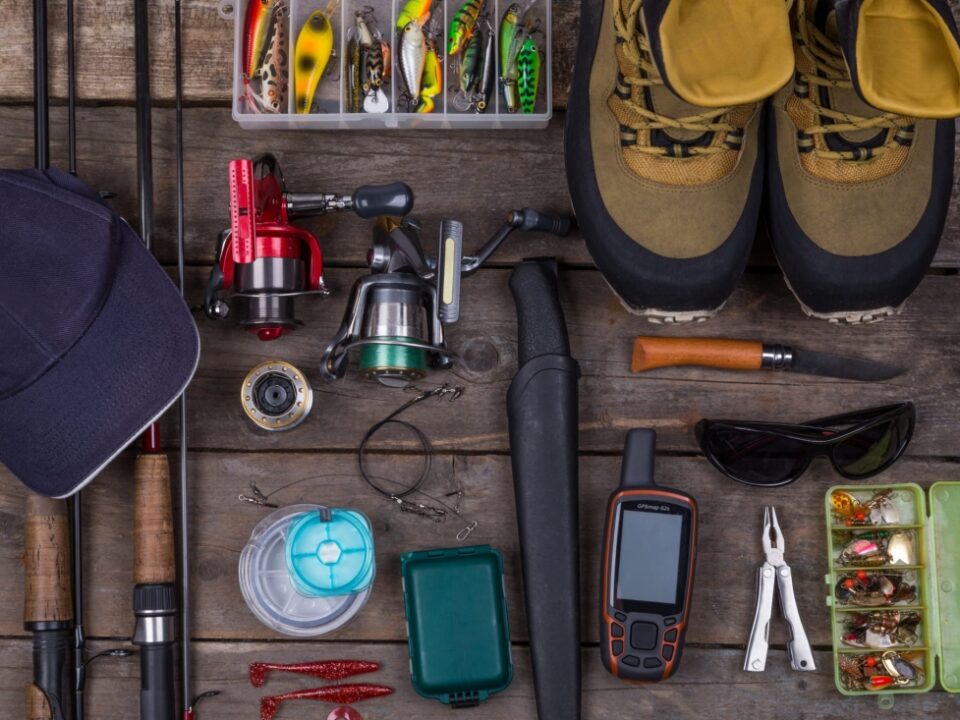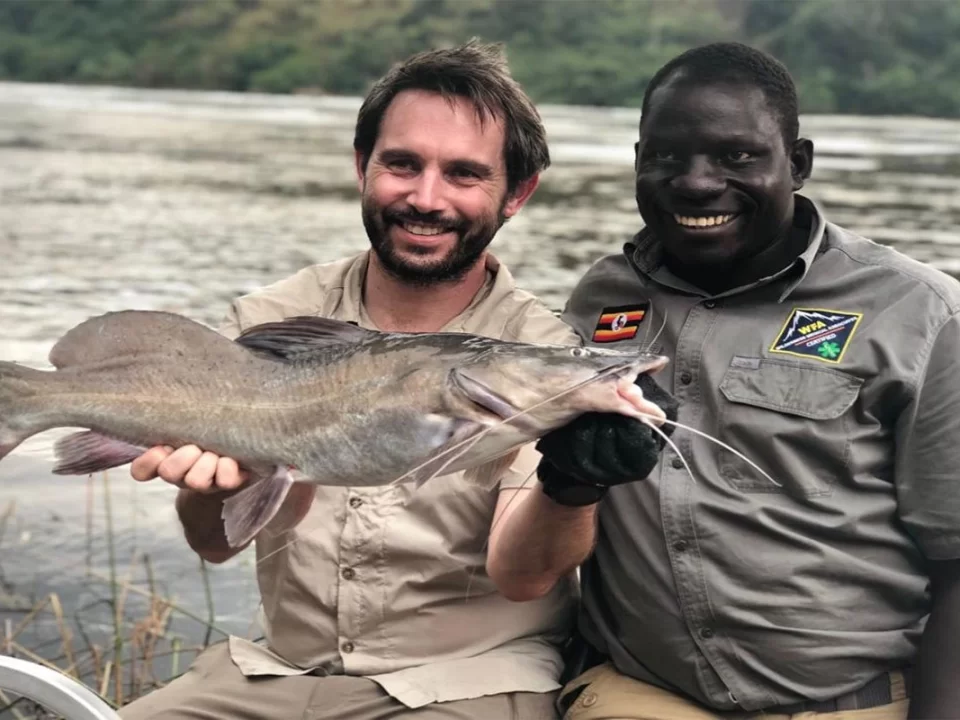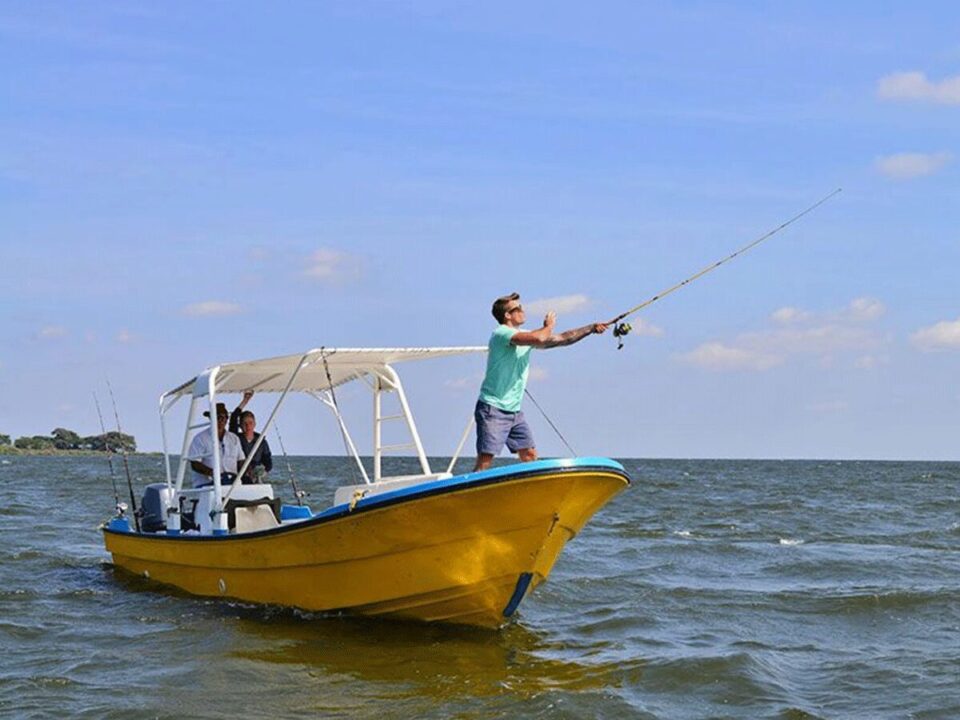Fishing Trips and Safaris in Uganda- Fishing for Nile Perch

Hiking Rwenzori Mountains in Uganda
September 12, 2023
Exclusive Birding Trips in Rwenzori National Park
September 12, 2023Embarking on Fishing Trips and Safaris in Uganda- Fishing for Nile Perch – Hooking the Mighty Nile Perch
Unlocking the Thrill of Fishing in Uganda – Fishing Trips and Safaris in Uganda- Fishing for Nile Perch. Uganda, with one-third of its territory covered by water, emerges as an angler’s paradise and an ideal destination for sport fishing enthusiasts. The country’s expansive aquatic landscape offers exceptional opportunities for sport fishing, with the action centered around the River Nile in Murchison Falls National Park and the vast expanse of Lake Victoria in Entebbe. It’s here that you can challenge yourself to reel in colossal Nile Perch, some weighing over 100 kilograms below the breathtaking Murchison Falls, and encounter a wide range of other formidable aquatic species, including catfish, Tilapia, Tiger fish, Ngara (Genus alestes), and ferocious fighters.
A Comprehensive Guide to Fishing Trips and Safaris in Uganda
For those eager to partake in the angler’s pursuit in Murchison Falls, it’s crucial to enlist expert guidance to ensure both a secure and fruitful fishing experience. While some may possess enough angling experience to venture forth with a rented boat and skipper, it is highly recommended for most to engage an experienced fishing guide, especially if it’s their first foray into Uganda’s fishing scene.
Navigating the Route to Fishing Utopias
To reach the prized fishing grounds of Murchison Falls National Park, you can embark on a picturesque six-hour drive northwest from Entebbe via Kampala (subject to traffic conditions). The majority of the roads leading to the park are paved, ensuring a comfortable journey until you reach the park, where murram roads await. Our all-inclusive packages offer private transportation with a designated driver in spacious 4×4 vehicles that can accommodate fishing equipment comfortably. Alternatively, for those seeking a more expedited journey, consider utilizing internal flights between Entebbe and Murchison Falls National Park.
Choosing the Perfect Time for Fishing Safaris in Uganda
The optimal time for fishing expeditions in Murchison Falls can vary from year to year. Generally, the drier months tend to yield superior fishing results, with prime fishing conditions prevailing from December to March and June to October. While fishing is viable throughout the year, these months offer a decreased chance of encountering rain. However, it’s important to note that thunderstorms may occur sporadically throughout the year, so it’s advisable to inquire about the current weather conditions before making any bookings. The onset of the April/May rainy season is best avoided.
Methods Employed for Fishing in Murchison Falls
Sport fishing at Murchison Falls National Park predominantly unfolds in the vicinity at the base of the falls. Anglers can choose between fishing from the rocky banks along the river or from boats in the pools below the waterfalls, providing varied and exciting fishing experiences.
Navigating Lake Victoria for Exceptional Fishing Adventures
Adapting to the Elements on the Nile
High temperatures, occasionally exceeding 40 degrees Celsius, are common in Murchison Falls, particularly around midday. Anglers are advised to come prepared with adequate sun protection, including sunblock, hats, and long-sleeved shirts. Additionally, the presence of tsetse flies at certain times necessitates long trousers and insect repellent.
Casting for the Prize: Methods and Gear
Fishermen targeting Nile perch and various catfish species typically employ live bait or cast lures. Smaller species, used as live bait, are often captured through spinning, including the agile tiger fish. Suggested gear includes a fishing rod ranging from 8 to 11 feet (2.4 to 3 meters) in length, coupled with a fixed spool or multiplier reel. For smaller species, a 7′ spinning rod with 5 kg (10 lb) line is sufficient.
Reels
Reels with 30-35 lb line (approximately 17 kg) work well for Nile perch and catfish. The choice between a fixed spool or multiplier reel is contingent upon personal preference and proficiency with a multiplier. When targeting tiger fish and smaller species, opt for a reel suited for casting small spinners comfortably.
Vital Details for a Seamless Fishing Experience
Inclusions
Our fishing packages incorporate the use of boats on the Nile, accompanied by skilled skippers and fishing guides, fuel, lunch, drinking water, and access to fishing equipment. A USD 100 deposit fee per fishing rod is required before departure, refundable upon return, less any charges for breakages or damaged equipment.
Exclusions
Not included are the National Park Entry Fees of USD 40 per day and National Park Fishing Fees, ranging from USD 40 to USD 50 per day, dependent on the number of days dedicated to fishing. These fees are payable directly to the Uganda Wildlife Authority.
Anglers on Board
While it is possible to embark on a fishing adventure with a minimum of one person, each fishing boat can accommodate a maximum of four anglers. For the safety and comfort of all passengers, it is advisable that those on board are experienced, although the recommended number is two anglers per fishing boat.
Packing Essentials for Your Fishing Expedition
Within the confines of Murchison Falls National Park, there are no retail establishments. As such, it is essential to come well-prepared with all necessary supplies, including sunblock, medications, spare batteries for electronic devices and cameras, mosquito repellent, and even cigarettes, if desired. Sun protection is paramount, so remember to pack hats, sunglasses, and sunscreen to combat the scorching heat. Lightweight, light-colored clothing is ideal, as it provides relief from the sweltering conditions while deterring tsetse flies. Opt for long sleeves and trousers, and avoid dark blue or black garments, as these colors attract tsetse flies. Be sure to carry a lightweight rain jacket and a sweater for cooler evenings.
Maximizing Your Adventure in Murchison Falls
In addition to the exhilarating fishing excursions, the possibilities for exploration and discovery in Murchison Falls are boundless. Plan excursions for game drives, Nile river cruises, and chimpanzee trekking, which can be seamlessly integrated with your fishing itinerary. These extraordinary activities are not included in the pricing quoted below but can be arranged upon request. If you wish to extend your fishing journey to encompass other regions of Uganda, such as mountain gorilla viewing, our team can facilitate this additional component of your safari.
Navigating Nile Waters: Safeguarding Against Risks
While angling on the Nile, it is imperative to exercise caution and refrain from extending hands and feet outside the boat. The river is home to dangerous Nile crocodiles and hippos, posing potential risks to anyone who ventures too close to the water’s edge. Your safety remains paramount.




